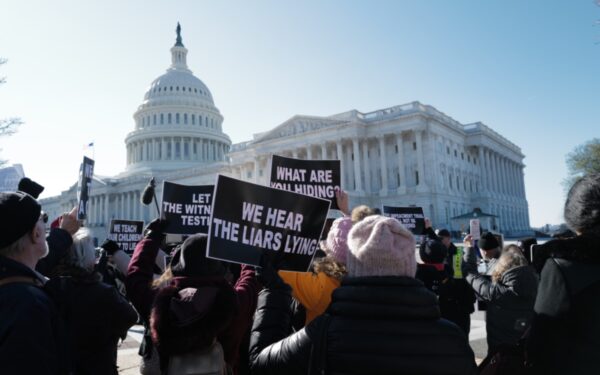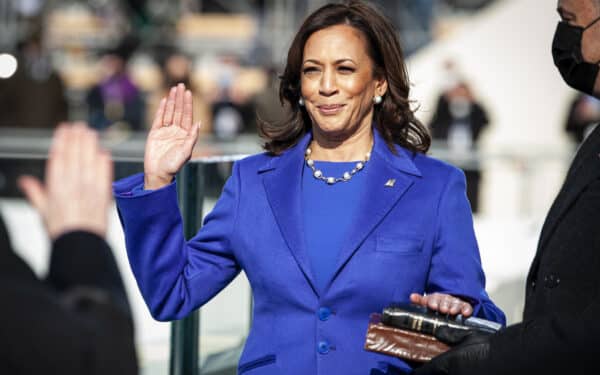Dateline Washington (sometime in 2034)
The first indication that there was more to the story than just another “fake news” rumour came in early 2019, several months after her father had received a humiliating thrashing in the US mid-term elections and lost the Senate in a stunning reverse.
A run by the President’s daughter for the second highest office in the land had been the stuff of mockery by American TV satirists for several years, as Ivanka’s profile grew ever more and her husband, Jared Kushner, battled for control of the direction of a struggling administration. Amid such chaos, the Trumps would not be so brazen as to try and put another Trump on the ticket for the 2020 Presidential election? A father and daughter team? Would they really retire Mike Pence as Vice President and replace him with Ivanka, the favoured, golden child of the 45th President of the United States? The Trumps were that brazen. They would and they did.
What made her father’s mind up to choose her as Vice President over Pence for his re-election bid was the way in which Ivanka saved him at his lowest ebb when his White House was in meltdown and it looked as though he was done for.
“She’s great. So great. I’ve got like the greatest daughter. And she’s smart. So smart. She’s gonna be a great President some day,” he told German Chancellor Martin Schulz when the pair made an unconvincing effort to bond over sausages at the “Reconstructing Europe” great power conference held in Hamburg in January 2019. The leaders met during a financial crisis that eclipsed even the events of 2008. This time the entire global monetary system needed rescuing after the collapse of the euro, which had been prompted by France’s protracted and painful withdrawal from the single currency that culminated in the full-blown crisis of August 2018. The resulting bond market explosion and credit crunch broke the eurozone apart, sending investors rushing for the safety of the dollar. The UK, less than a year away from leaving the EU and with its own currency, became another haven for investors, causing a headache for the government of Prime Minister David Davis as the pound surged and interest rates eventually had to rise rapidly.
In the US, the focus was on righting the economy amid turmoil too. The administration had been on a crazy rollercoaster since coming to office. After winning in 2016 at the head of a populist insurgency, the Trump administration started badly. What worked on the campaign trail – wild promises and endless tweeting – did not work in the Oval Office. Critics began by being scared of Trump and within six months were laughing at him, calling him an incompetent. The President did not like this, and his executive orders banning fake news and fake opinion polls were litigated to death in a thousand court cases.
But by the end of 2017, Trump’s policies on the economy were working and voters were – initially – impressed. Economists had said there was no real room for an increase in growth, but the dynamic effects of rocketing confidence fed through and the economy suddenly surged in unexpected ways. Tax cuts and deregulation, and cuts in corporate tax, brought money flooding in from abroad for all manner of investment. By the middle of 2018 there was a blistering boom going, with the Dow hitting 30000.
The first tremors of impending disaster were felt on Wall Street that summer. Initially the crisis in Europe did not figure much. Traders told themselves it had been going on so long and would be resolved, surely? France had been attempting to renegotiate a new deal with the EU, under President Marine Le Pen, who resisted at first the calls from her nationalist supporters to leave the euro and the EU. It was only in the summer of 2018, after more than a year of deadlock and disarray, that Le Pen opted for a quick referendum under the banner of national independence. She won and the eurozone exploded.
When it emerged the same month that parts of a deregulated Wall Street, not all of it, but some of the biggest banks, had made a series of duff and epic bets on the outcome of the European monetary crisis, and had tried to hide the extent of their exposure to European debt, there was sudden panic that spread to other stocks. Investors were further spooked by the great “Trump infrastructure bonds” scandal with kickbacks alleged to have gone to Italian American families who were “big in the cement business.” The economic weather changed for the worse, very quickly.
In such a climate, the President’s reputation as a man of business who knew what he was doing was wrecked that summer and autumn.
The interconnectedness of the global economy – a blessing in good times – once more proved itself to be a transmission mechanism for disaster with fears about banks around the world providing the trigger. China had been slowing for a while and then wobbled properly, with demand for Chinese goods in the US and Europe declining. Meanwhile, the British stumbled in a simple and stupid manner that seemed hard to credit. Car finance had ballooned with almost £17bn of new lending issued in 2016 and a rapidly rising number of bad debts. Suddenly, the British noticed that millions of people who could not afford it were driving the swankiest cars. When they couldn’t make the repayments it initially seemed like a minor story, and then it started to punch unexpected holes in several major financial institutions just as unemployment began to rise and the eurozone fallout landed.
In the US, by October, Trump’s boasts of economic success looked ludicrous. The disaster was compounded by the President condemning “fake statistics” showing the extent of the problem, even though they had been released by his own government. “We have so much growth. The greatest growth ever. The figures don’t show it. Honestly. Crooked figures. Don’t believe ’em, folks,” he said to a half empty rally in Michigan at which his worried supporters did little cheering. In the mid-terms the Democrats hit him with a double whammy. His early incompetence had been followed with the launch of an economic experiment so reckless that the overheated economy swung from growth to crash in one quarter, they said. The Republicans had done it again.
But a steely Ivanka steadied the ship that winter, decisively securing control of the agenda along with her husband. Even if the economy was in a hole, there was a new assuredness and professionalism in an operation that blamed the useless Europeans for global economic turmoil. The firings in the Trump White House under Ivanka were swift and the disappearance of chief of staff Steve Bannon was a media sensation. Months later he emerged, after going on the run during a global media hunt, running a bar in Malaysia and pondering his next move, which turned out to be the launch of an alt-right website for young men angry at Trump’s betrayal and excessive closeness to the Chinese government.
The daughter had saved the father. She was even stronger than her old man. “He’s like old Henry VIII and she’s kinda like Elizabeth I,” said leading historian of the Trump movement Milo Yiannopoulos, who broke with Bannon and stuck with Trump when the President appointed the young British comedian as Professor of Trump Studies at Trump University.
In a press conference at Trump Tower in mid-2020, the Donald announced that Ivanka would in that November’s presidential election be his running mate. “Not that kinda mate. I gotta stop that. She’s gonna hit me now,” he said to nervous laughter from the crowd. “Seriously, folks. She’s so tough. Don’t you think it’s time we had a female Vice President? And then? Who knows.”
Her overtures to liberals – including a massively popular pledge to ban British television twit Piers Morgan from America – were the surprise hit of the summer. As her popularity soared, her father faced charges of betrayal from his armed supporters, on the grounds that the tall wall with Mexico had proved vulnerable to people digging tunnels under it and getting in airplanes and flying over it to land at airports on holiday and then not leaving. Donald was old news. Ivanka was it. Celebrity is a cruel mistress.
At the Republican convention there were calls for Ivanka to be promoted to the top of the ticket, but she gave a robust defence of her father’s record in adversity and she attacked the Democrat nominee Oprah Winfrey – and her running mate Chelsea Clinton – for demeaning politics by reducing it to the level of a television soap show.
The 2020 election that followed was close, but Ivanka made the difference in states such as Michigan, still not ready to go back to the Democrats despite the economic disappointments. The Democrats, obsessed with progressive causes, still could not connect with voters where it mattered.
By the time the Donald slipped on a stray globule of blue cheese salad dressing in the stairs leading to the dining room of his country club, Mar-a-Lago, during a Stalin-themed evening honouring Vladimir Putin in February 2021, Ivanka was already operating as the President in effect. Initially it looked as though Trump would recover from the fall, but he was weakened by a series of complications, not least of which was the presence in the hospital of a Mexican nurse who “tripped” and “accidentally” removed the plug from the life-support machine.
At the Superbowl that year there was a minute of silence observed for Donald, and then wild celebrations from the assembled throng. President Ivanka Trump sang the national anthem, dressed as Beyonce, and embarked on a programme of moderate, traditional Republican policies that saw her win election in her own right in 2024, before her attempts to hand over to young Barron Trump in 2028 were derailed by the war between Germany and Russia when they both invaded Poland simultaneously, ushering in the end times.
Don’t miss next week’s exciting episode.




